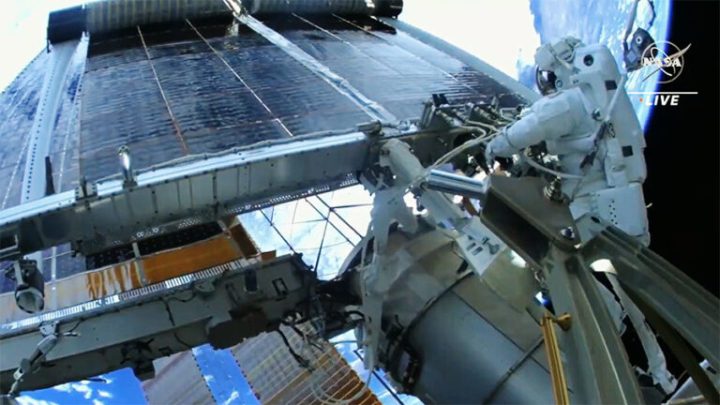Two astronauts performed a spacewalk yesterday, heading outside the International Space Station (ISS) to install a new solar array as part of a long-term plan to upgrade the station’s power system. NASA astronauts Steve Bowen and Woody Hoburg spent just over six hours outside the station, completing all of their objectives for the spacewalk.
Bowen and Hoburg were installing a new solar array called an IROSA (International Space Station Roll-Out Solar Array) to the station’s 1A power channel. This is one of six IROSAs that are being installed on the ISS over a period of several years to modernize the arrays, which provide power to the station. Some of the old solar arrays were approaching 20 years old. They were designed for only 15 years of operation originally and upgrades began in 2021.

The two astronauts left the station at 9:25 a.m. ET on Friday, June 9, exiting the station’s Quest airlock, and concluded the spacewalk at 3:28 p.m. ET. During this time, they installed the new array and also prepared the 1B channel for the installation of the sixth and final IROSA, which is set to be installed in another spacewalk on Thursday, June 15.
The old solar arrays become less efficient over time, but they do still provide some power, so they won’t be removed from the station entirely. Instead, the new IROSAs are deployed on top of the old arrays at a slight offset. The new arrays are much smaller than the old ones, at 60 feet by 20 feet compared to the older ones at 112 feet by 39 feet. But thanks to improved efficiencies in the technology, they still provide as much power as the old arrays, even at the smaller size. Once installation is complete, the station will be able to generate power from both the new arrays and the parts of the old arrays that extend beyond them.
This should result in a 30% increase in the power the arrays can generate once the upgrades are complete.
Editors' Recommendations
- Watch SpaceX’s Crew Dragon take one of its shortest journeys on Thursday
- See what the solar eclipse looked like from space
- Crewed Soyuz launch to space station suffers rare late abort
- How to watch homecoming SpaceX astronauts fly overhead on Tuesday
- Asimov’s vision of harvesting solar power from space could become a reality



